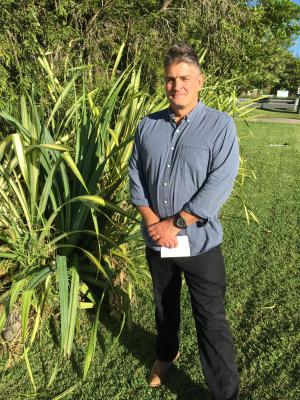So important is exercise not only in preventing cancer but in reducing the risk of its recurrence and enhancing treatment a dedicated area of research, exercise oncology, has been established.
“Fifteen to 20 years ago it didn’t exist,” USC School of Health and Behavioural Sciences professor David Jenkins told guests at U3A Noosa last Friday.
“Twenty years ago doctors told patients to take it easy. Now we know exercise will make it better.”
Scientists know 30 per cent of the development and recurrence of breast and colon cancer can be attributed to lifestyle factors, particularly exercise and diet.
Dr Jenkins said exercise may not reduce the risk of all cancers but did reduce breast and colon cancer risk.
“Exercise will improve your quality of life. By going for a walk your mental health improves. Quality of life is so important,” he said.
While body fat has long been the focus of research, scientists are now realising the role of muscles and their extraordinary ability to maintain health and fight cancer.
“For a long time the reason was attributed to the loss of body fat from exercise,” he said.
“That might still be true but it doesn’t explain how in a single bout of exercise, chemicals are produced that decrease the growth of cancer.”
When muscles contract they release chemicals called myokines, he said.
“There are up to 300 kinds of myokines released by muscles when you exercise. They improve cognition, fat and glucose metabolism, bone formation, blood vessel function and muscle growth and help prevent dementia.
“In the past five years scientists found tumour growth was reduced by ‘natural killer cells’. These killer cells increase as a direct result of myokines being released by muscles during exercise.”
Dr Jenkins said the myokines are proteins but there’s not a lot people can do with their diet to trigger them.
“The only way to get an increase in killer cells in the blood is to exercise as often as possible,” he said.
However the naturally occurring killer cells that attack the cancer disappear within 1-2 hours of exercising so regular bouts of exercise are more effective.
“We suspect that the type of exercise most likely to elicit the largest myokine production and release in response to exercise involves large muscle groups, of the legs and chest, exercising at a relatively high intensity.”
Dr Jenkins said high intensity, intermittent exercise, such as walking quickly, then recovery, then walking quickly again was most beneficial.
The muscles are also important in maintaining glucose levels. Dr Jenkins said studies done on the problems associated with people sitting for long periods found while people sit their glucose level increases. When they stand the muscles in their legs take glucose out of the blood.
In addition to exercise Dr Jenkins recommends a Mediterranean-style diet, high in proteins and including yoghurt, nuts, fish and olive oil.







